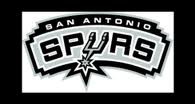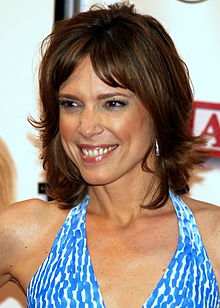This is the third in a five-part series on The History of the San Antonio Spurs (© Whitman Publishing, LLC), which was recently released and is written by Sheridanhoops.com columnist Jan Hubbard (twitter: @whyhub). Yesterday, the roots of the Spurs franchise were traced back to the first six colorful but largely futile years the franchise spent as the Dallas Chaparrals. Although they were excited about having a team in a major league sport – even if it was only the struggling American Basketball Association – San Antonio owners B.J. “Red” McCombs and Angelo Drossos knew they could not field a mediocre team and succeed in the small market. This third installment details the strategy that created the foundation of the successful franchise. (You can order the book here.)
The Spurs had not captured the imagination of San Antonio fans upon arrival in 1973. Owners had quickly changed the name of the team from Chaparrals to Spurs to reflect the Western heritage of the area. One member of the ownership group was an avid Oakland Raiders fan, so team colors were changed from red, white and blue to the more intimidating black, silver and white.
 While the crowd at opening night was announced at 5,879, support was modest with an average of about 1,600 a night during the first month of the season. McCombs and Drossos knew they had to do something to get area fans interested. So they took that $800,000 (in operating capital) and spent it much faster than they had planned because as McCombs now says, “Star power is very important in this business.”
While the crowd at opening night was announced at 5,879, support was modest with an average of about 1,600 a night during the first month of the season. McCombs and Drossos knew they had to do something to get area fans interested. So they took that $800,000 (in operating capital) and spent it much faster than they had planned because as McCombs now says, “Star power is very important in this business.”
Drossos first assault was on management of the city-owned HemisFair Arena.
In the excellent book “Loose Balls,” which is an oral history of the ABA and is as entertaining today as it was when released in 1990, Drossos told author Terry Pluto that he spent $200,000 to get the concession rights in the arena. Drossos then went to representatives of Coca-Cola and Pepsi, who were then as they are now involved in a major battle for superiority, and told them the only way either could be in the arena is if both were in the arena.
“It ended up being both,” [former Spurs PR director Wayne] Witt said. “We had to have the only arena with Coke and Pepsi sold inside. But it was a major source of income and Angelo had to have it.”
Twenty-two games into the season with the Spurs a mediocre 10-12, Drossos continued his spending ways by sending $300,000 to [owner Earl] Foreman and the Virginia Squires for the rights to 6-11, 240-pound center Swen Nater.

Hannah Storm, daughter of ABA commissioner Mike Storen
At that point, ABA Commissioner Mike Storen announced he was freezing the Virginia roster. Foreman had already traded Julius Erving – the transcendent young player in the league – to the New York Nets in a multiplayer deal that also brought $1 million to the Squires. Foreman could not afford to keep the team, but Storen wanted to find a buyer. And if Foreman kept trading players for money, the team would not be attractive to potential investors.
Drossos and McCombs, however, had seen a special 21-year-old skinny kid demonstrate genius on the basketball court. They thought that even though he was 6-foot-7 and needed a robust meal to make it to 170 pounds, George Gervin – already known as the Iceman because a teammate in Virginia said Gervin “was so cool” – could be the foundation of the team in San Antonio.
After listening to Storen, McCombs said: “Knowing we weren’t supposed to, knowing he had the authority as the commissioner, we still went against that and did everything against what our parents had taught us – to be honest and straight-forward. And we were able to make a deal to buy the [contract of] the Iceman.”
Drossos, who died in 1997, told Pluto in “Loose Balls” that the deal was probably the most unusual ever made. The American Basketball Association All-Star game was going to be played in Norfolk, Virginia, and Foreman did not want fans to boycott the game when they found out he had traded Gervin. So Drossos told Foreman the Spurs would make the deal for $225,000 and pay the money immediately. But the trade would not be effective until after the All-Star game, which was several weeks away.
 That was only a small part of an intriguing story that was straight out of a spy novel.
That was only a small part of an intriguing story that was straight out of a spy novel.
“The owner [Foreman] said, ‘I’ve got to have cash,’” McCombs said in a recent interview. “So we call Frost Bank [in San Antonio] and tell them ‘you gotta get a guy and take this cash to National Airport in Washington, D.C., and go to a [designated] phone booth.’ And we’d been given the instructions as to how we had to deliver the money. [The courier was told] ‘wait for that phone to ring and when it does, the guy’s going to tell you where to go next.’ So it was really like a CIA kind of a program.”
The story gets even better. Gervin had averaged 25.3 points and 8.5 rebounds in the 49 games he had played for the Squires and had played sensationally since the secret trade had been made. After the All-Star game, Foreman decided it was poor business to trade Gervin for cash and tried to back out of the deal. He was supported by Storen, who told Drossos that he would not approve the trade because he had frozen the Virginia roster.
Drossos responded with a promise of legal action and a classic letter that read simply: “[Bleep] you. A stronger letter will follow.”